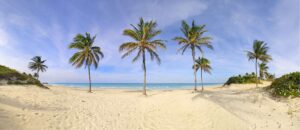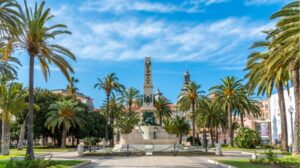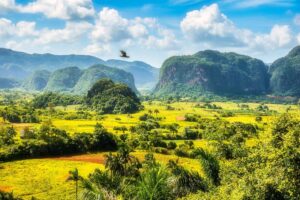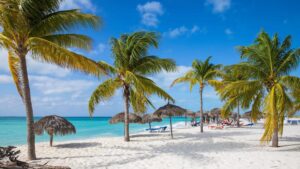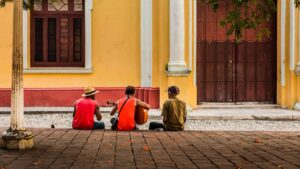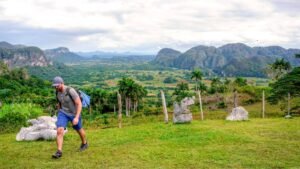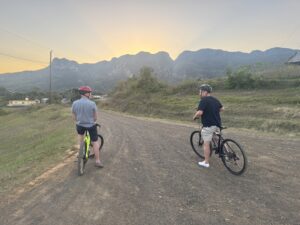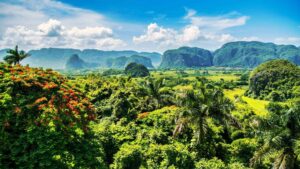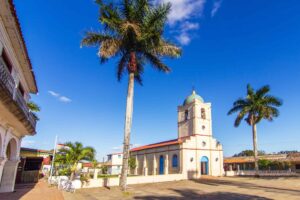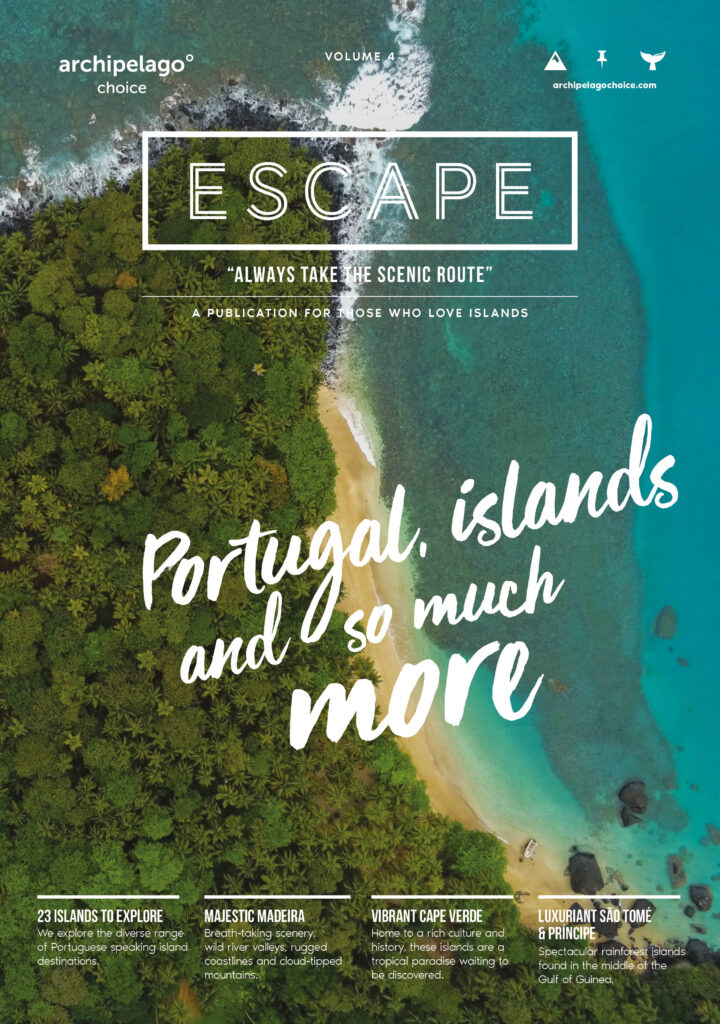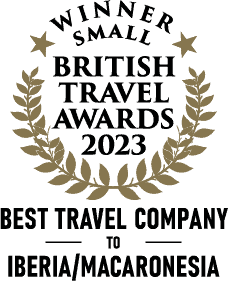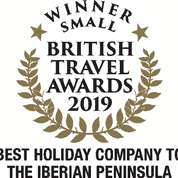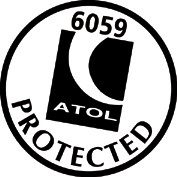Cuba is undoubtedly one of the most unique places to visit in the world and this exciting Caribbean island with a Latin soul, continues to enchant those that explore this diverse land. A visit to Cuba certainly leaves lasting memories, some unanswered questions and for now a feeling that Cuba is at the crossroads of change.
A rich Spanish colonial history has left a wonderful legacy of enchanting UNESCO World Heritage small cities, most notably the capital Havana and the city of Trinidad both windows on a colonial past.
The whole island literally sways to the beat of Cuban music and dance whilst basking under the Caribbean sun. Added to this heady mix is an amazing cultural legacy, where you can also enjoy world class ballet, classical music, art and literature. With a more recent backdrop of socialism, revolution and a difficult relationship with its very large neighbour, Cuba sits without wishing to, in the midst of global geopolitical waves .
A surprisingly large island and almost 800 miles long, the landscape is varied and includes towering mountain ranges with peaks over 6,000ft , tranquil valleys, lush rainforests, mangrove swamps with alligators, the world’s second longest barrier reef and over 4000 islands and cays, forming numerous archipelagos , making Cuba a perfect destination for Archipelago Choice!
Enjoying a beautiful sun-drenched Caribbean climate, Cuba is also blessed with some of the most beautiful beaches in the region, lapped by crystal-clear warm waters, teeming with aquatic life. Visitors can enjoy some globally recognised diving, excellent fishing and a variety of nautical activities from the more developed beach areas.
Cuba is calling out to be explored and if your curiosity is pulling you to go, then you’ll need a little help as travelling around Cuba is certainly not straightforward. However, with the help from our specialists you could find yourselves having one of the best travel experiences you’ve ever had.
If you feel yourselves being drawn towards exploring Cuba, then a good starting point would be to have an initial chat with a leading Cuba expert in our team at Archipelago Choice.
Best time to go
JanFebMarAprMayJunJulAugSepOctNovDec
Getting to Cuba
We take care of every detail of your tailor-made holiday, including flights. Our team searches for the best fares, schedules, and departure airports to suit your needs. Should there be any unexpected delays, we’re just a phone call away. Our emergency 24-hour UK helpline connects you directly to a member of our team for immediate support and advice. We offer complete flexibility, so your holiday has no limits; from multi-leg flights to internal flights and stopovers with city-packages, we’ve got it covered.
Getting to Cuba from UK
There’s an excellent choice of flights from the UK to Havana and Varadero (within 2 hours drive from Havana ) and regional Cuban airports, with very easy connections in Madrid, Paris or Canada. Air Europe fly 5 times a week, or more, from London Gatwick to Havana, via Madrid. Iberia Airlines offer regular flights from London Heathrow to Havana, via Madrid. Air France offer regular flights each week from London Heathrow to Havana, via Paris, and also offer regional departures from Edinburgh, Dublin, Newcastle, Manchester and Birmingham (also via Paris). Aero Mexico uniquely offer daily evening flights from London Heathrow to Havana via Mexico City. Air Canada fly daily from London Heathrow to Toronto and Montreal and also have season summer flights from Manchester and Edinburgh to Toronto. They fly regularly from Canada to Varadero , Santa Clara , Cayo Coco and Holguin. Air Transat fly daily from London Gatwick to Toronto and Montreal and also have regular weekly flights from Manchester and Glasgow to Toronto. They fly regularly from Canada to Varadero , Santa Clara , Cayo Coco and Holguin
Getting to Cuba from USA
There are multiple daily direct flights from Miami to Havana with American Airlines and United Airlines, both offering widespread connections throughout the USA. These flights accessible to visitors from the USA and those with full visas for entry to the USA . There are also multiple daily direct flights from numerous Canadian cities to Havana and all regional airports in Cuba, with a number of different airlines including Air Transat, Air Canada and Sunwing.
Getting to Cuba from elsewhere
If you are departing from outside the UK, US, or Canada, simply get in touch to discuss your holiday plans and we will talk through your flight options
